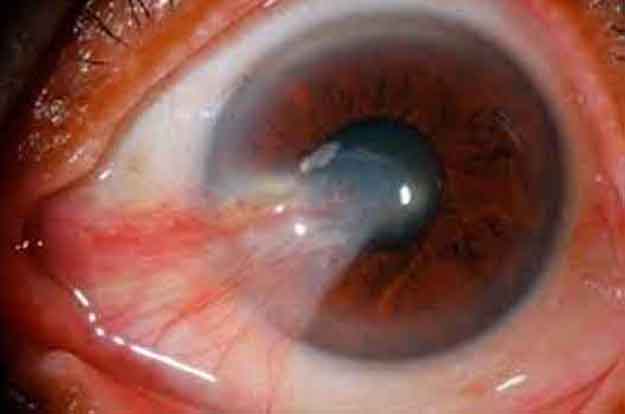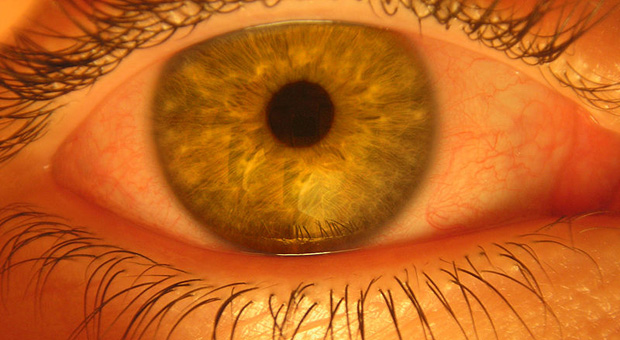UV protection afforded by high-quality polarized sunglasses and a wide-brimmed hat are not fashion statements. BTW: Throw away last year’s sunscreen

People who are suffering from pterygium may or may not experience any symptoms. Further, the symptoms are usually mild. The common symptoms of Pterygium: Redness, Blurred vision, Eye irritation, Itchiness, Burning sensation, Feeling of foreign object in the eye and Discomfort while wearing contact lenses. Image Eye Institute of California.
dropcap]A[/dropcap] pterygium is a growth that develops on the conjunctiva or mucous membrane that covers the white part of your eye. It is a benign or noncancerous growth that is often shaped like a wedge. In some cases, a pterygium can extend to the cornea. This is the clear part of your eye that covers your iris and pupil. Pterygia usually don’t cause problems or require treatment, although they can be removed if they interfere with your vision.
What Causes It?
The exact cause of pterygium isn’t known. One explanation is that too much exposure to ultraviolet (UV) light can lead to these growths (guides, charter captains, outdoor dedicated types, skiers). They occur more often in people who live in warm climates and spend a lot of time outdoors in sunny or windy environments. People whose eyes are exposed to elements like pollen, sand, smoke, or wind on a regular basis have a higher risk of developing this condition. Other risk factors include having light skin and light eyes.
What Are the Symptoms?
Pterygia don’t always cause symptoms. When they do, the symptoms are usually mild. Common symptoms include redness, blurred vision, and eye irritation. You might also feel a burning sensation or itchiness. If a pterygium grows large enough to cover your cornea, it can interfere with your vision. Thick or large pterygia can also cause you to feel like you have a foreign object in your eye. You might not be able to continue wearing contact lenses when you have a pterygium due to discomfort.
How Serious Is It?
A pterygium can lead to severe scarring on your cornea, although this is rare. This condition needs to be treated since the scarring can cause vision loss. For minor cases, treatment usually involves eye drops or ointment to treat inflammation. In the most serious cases, treatment usually involves a corneal transplant. In this procedure, your damaged cornea is taken out and replaced with a donated corneal graft to restore your vision.
How Is It Treated?
A pterygium usually doesn’t require any treatment unless it’s blocking your vision or causing severe discomfort. Your eye doctor might want to check your eyes occasionally to see if the growth is causing vision problems.
Medications
If the pterygium is causing a lot of irritation or redness, your doctor might prescribe eye drops or eye ointments that contain corticosteroids to reduce inflammation.
Surgery
Your doctor might recommend surgery to remove the pterygium if eye drops or ointments don’t provide relief. Surgery is also done when a pterygium causes a loss of vision or a condition called astigmatism, which results in blurry vision. You can also discuss surgical procedures with your doctor if you want the pterygium removed for cosmetic reasons. There are a couple of risks associated with these operations. In some cases, pterygia return after being surgically removed. Your eye might also feel dry and irritated after surgery. Your doctor can prescribe medications to provide relief and reduce the risk of having pterygia grow back.



